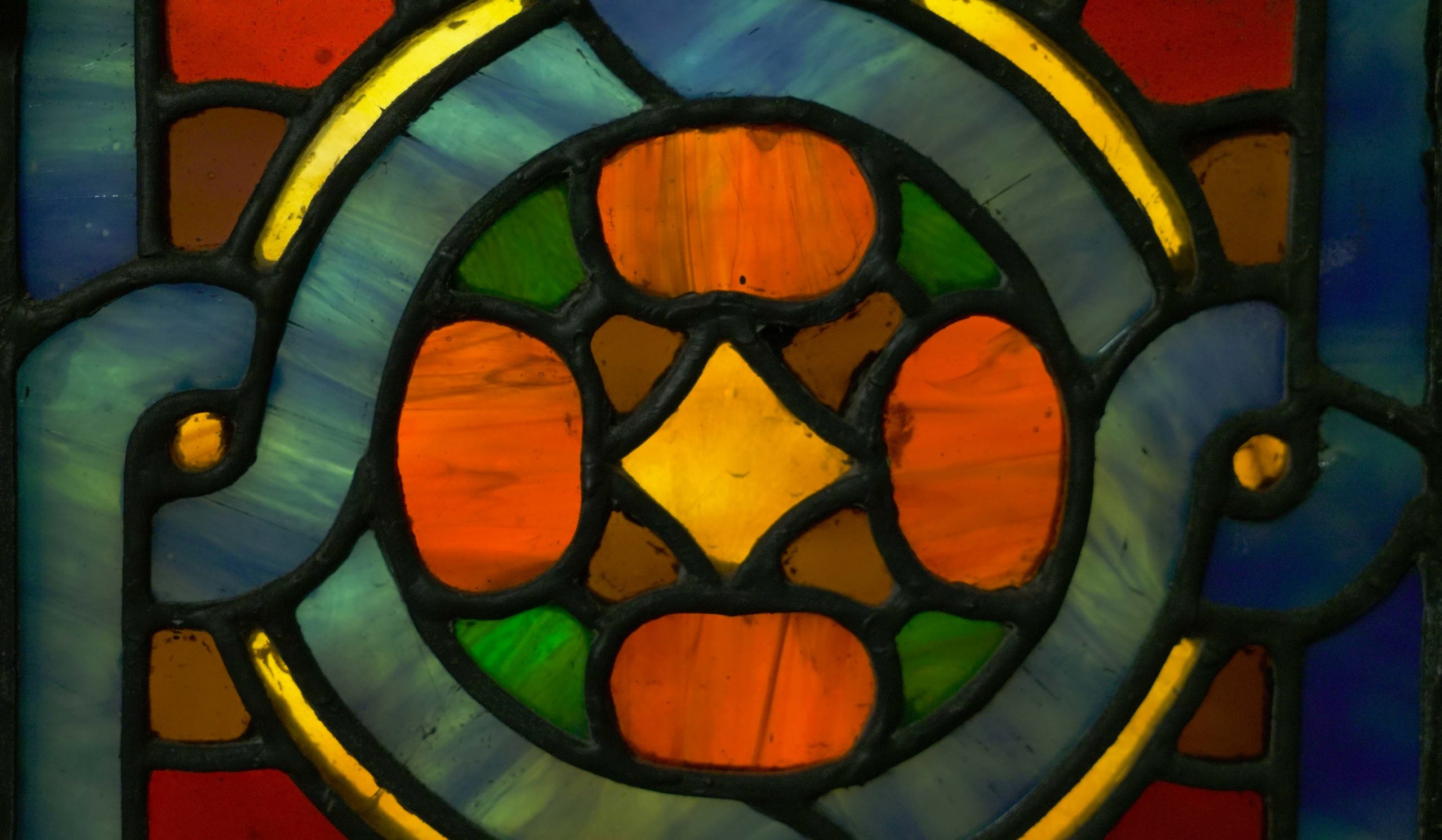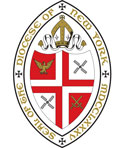Podcast: Play in new window | Download (Duration: 15:18 — 14.1MB)
Subscribe: Apple Podcasts | RSS
The Third Sunday of Advent
Watch the sermon here.
Zephaniah 3:14-20
Philippians 4:4-7
Luke 3:7-18
Canticle 9
Today is the third Sunday of Advent, the Sunday called Gaudete Sunday – Rejoicing Sunday. If we were keeping Advent more like a penitential fast of preparation, this day is a chance to lighten things up a little bit, to be a little less somber. So how many of you are keeping an Advent fast? Right. In my household we start the birthday season the second week of October, which flows into the Christmas season, and it’s one long string of baked goods and chocolate. No fasting going on for me. So hooray, we light a pink candle today instead of purple, but otherwise, this day tends to pass by on the church calendar without much more than a blip.
But today is also the feast of Our Lady of Guadalupe, La Virgen, Mary the mother of God as she appeared to an indigenous peasant in Mexico. December 12 marks the day of her feast, and it truly is a day of rejoicing and celebration. Many of the faithful make their pilgrimage to the Basilica of Guadalupe in Mexico City; others run torch relays through other towns to carry the news of the Guadalupe – including one relay that begins in Mexico City and ends here in New York. The runners of the Carrera Antorcha Guadalupana arrive in New York today, bringing the torch here, the end of the 2500 mile relay run – you may have seen them coming down Riverside. You have likely seen La Virgen’s image in Mexican restaurants or Catholic churches or truck windows. La Virgen is everywhere.
The story is that in December of 1531, La Virgen appeared to the peasant Juan Diego on a hill called Tepeyac, a place that was sacred to the goddess Tonantzin, and told him to go to the bishop to tell him to build a basilica in her honor. Juan Diego obeys her, but he must go back to the bishop repeatedly before he is finally listened to. La Virgen continues to encourage him, and finally provides him with the proof he needs to persuade the bishop: blooming red roses, growing in the midwinter desert. Juan Diego carries the roses to the bishop in his cloak, and when he opens the cloak, there is the image of La Virgen, the one that is so famous now. That cloak with the image is on display in the basilica to this day.
If you’ve heard other stories of Marian apparitions from around the world, you may think of this as just another somewhat strange Catholic story, something from a tradition quite different from ours. But what is especially wonderful about this story – and to me, so compelling – is that La Virgen appears to the peasant Juan Diego as a dark-skinned indigenous woman, dressed in indigenous clothing and speaking to him in Nahuatl, one of the indigenous languages of Mexico. She is one of the dark Madonnas, La Morenita. It is precisely this that makes the bishop so disbelieving – for the bishop is a Spanish-speaking colonial, unable to entertain the idea that the mother of God could be anything other than light-skinned and Spanish-speaking – even if, God forbid, she did decide to show herself to a peasant. The Castilian roses La Virgen sends the bishop finally persuade him otherwise, and so the basilica is built. Not the first time a lavish gift convinced someone in power.
This is a story that makes me cry every time I hear it or see it told. Our family particularly loves a version of the story enacted in a pageant by El Teatro Campesino, a Chicano theater company in San Juan Bautista, California, originally part of Cesar Chavez’ farmworkers movement. Many of the cast members are not professional actors, but simply members of the Latino community in that central California farming town, putting on this pageant in the old mission church, with all of its complicated history. When La Virgen makes her first appearance and sings out ‘Juan! Juan Diego!’, and Juan Diego falls to his knees, overcome, I always start to cry. It is such a powerful story of God coming to every one of us, looking like us and speaking our language, all to tell us how much we are loved. Even in the midst of our human sin and blindness.
And yet it’s also a story of how we can fail to recognize God when she comes – when what God looks like and how God acts doesn’t fit our preconceptions. The bishop can’t imagine God taking the form of an Indian peasant and so misses a direct communication and request from God. Not the first time race, class, and power get in the way of someone seeing God at work. It makes me wonder how often I, too, miss the message. When do I fail to listen to one of God’s messengers, because they don’t look like me or speak language like mine? Or when do I ignore something God might be saying because it doesn’t accord with my own vision of what I want?
In Advent, of course, there’s John the Baptist, another sort of messenger from God. He looked the part, locusts and crazy hair and all. And he starts off his sermon with “You brood of vipers!” – which to his listeners may have been oddly comforting, the familiar notes of a prophet of the Lord. For us it’s not the best entrée, perhaps, but he gets the crowd’s attention, with a message of wrath to come. They ask him what they should do in response to this news, and John tells them. Every one of his answers has to do with economic equality and financial integrity. Share what you have; don’t cheat people in your work; don’t abuse your power. This too fit the prophets of old: a message of economic justice (that good scripture readers have ignored as much as possible ever since).
But this is not a message just to nod and smile at before we head out Christmas shopping this afternoon. Because this too has to do with God coming to us in the midst of our world. How we deal with our money shows something of what we believe about God. Are we just? Are we generous? Are we caring for others’ needs? We praise God for his justice, mercy, and love; do we live out those attributes as well? Because living this out in our lives witnesses to the God we say we believe in. But if not, if we’re stingy and self-serving in the stuff of this world, that suggests we don’t really have faith in that God after all. We don’t trust that God enough to hold on less tightly to our own money and power.
In other words, how we go about our lives is itself a constant witness to God. We are made in the image of God; we are the image of God for each other. We are what others see and experience of God. Do we show in our lives the great love of God? Or do we tarnish God’s image in our lives? Maybe you need reminding that God’s image is in you – you, whatever you look like and however your life has unfolded. Which is part of what La Virgen comes to show Juan Diego: this poor man of a conquered people, he too is one of God’s beloved. We every one of us are God’s beloved, carriers of the sacred image of God.
As you leave here today, spend some time with the image in the back of the church, Christ on the cross. Christ as a Black man, suffering: that image brings a message of God, just as the image of the Guadalupe does. It says to people who have suffered in this world, Here is God, our God, in our skin, with our features. Here is a God who knows what our life is like. Here is God in our flesh, living as one of us, rejoicing with us and mourning with us. That is what the Incarnation is about – God as a vulnerable child; God as a brown-skinned son of a poor family; God as a wandering traveler with nowhere to lay his head. God knows what it is to suffer. God knows what being human feels like.
That is the God we bear witness to here in this place. And other people will know that God by seeing him in us, if we are able to show him. They will know that God by what we do with the stuff of this world – our money, our resources, our status and privilege or lack thereof. They will know God if we take care to shine God’s image of love in this world. The light shines in the darkness, through us. May the example of La Virgen de Guadalupe, the example of John the Baptist, the example of Christ on the cross, show us the way of justice and mercy. Amen.





